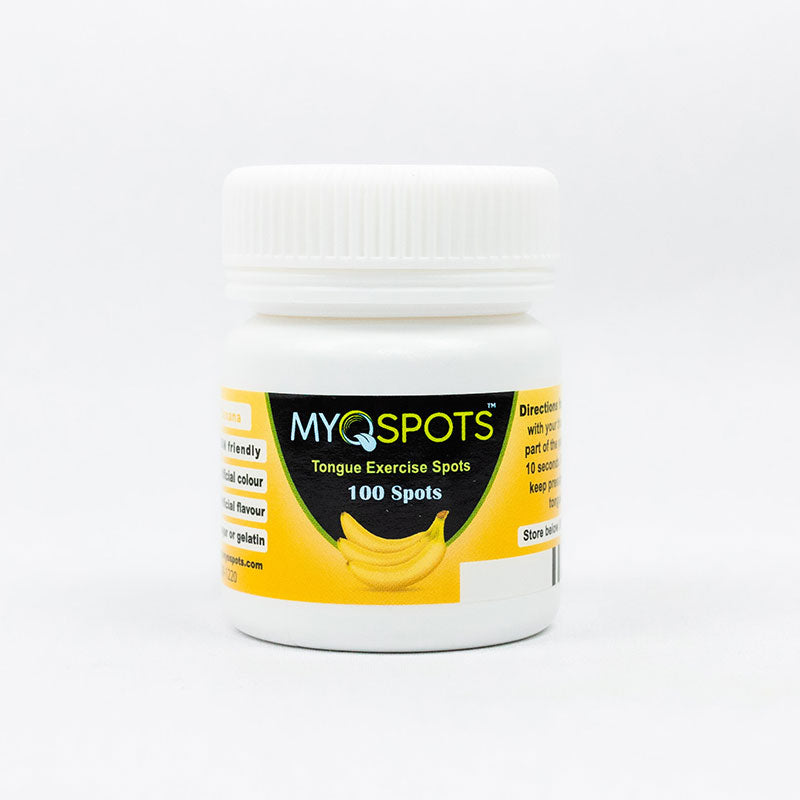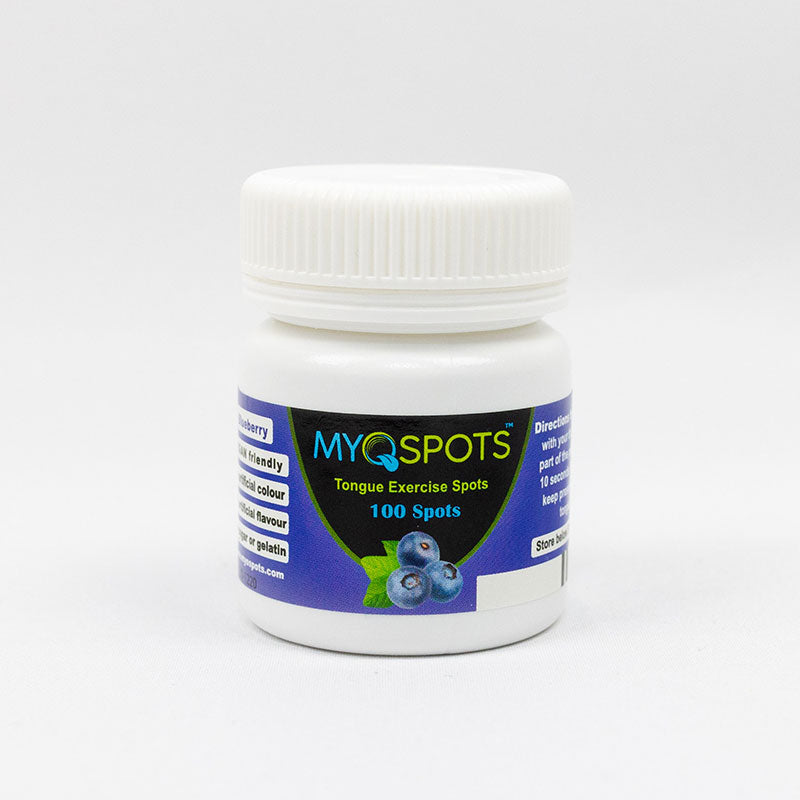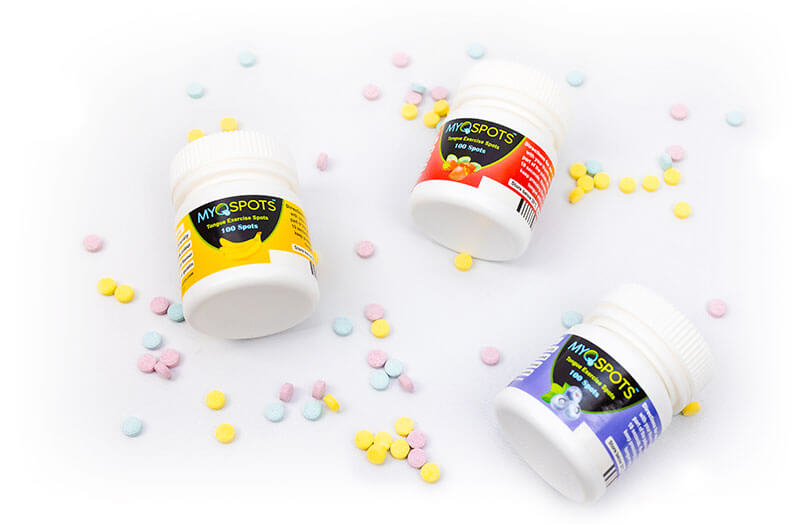
Snoring happens when your throat vibrates while you sleep. That can happen for many reasons, including smoking, drinking alcohol, being overweight, sleeping on your back or breathing through your mouth.
Most people agree that snoring is annoying, especially for others who are trying to sleep through it!
In recent years, though, we’ve come to learn that snoring is far more than an annoyance. It’s a sign that something is preventing you from breathing properly. Snoring is also linked to a number of health risks, including sleep apnoea or enlarged tonsils.
Learning how to breathe through your nose can help prevent snoring, giving you (and your whole household!) the benefits of a good night’s sleep.
How to stop snoring
To stop snoring, you need to learn how to breathe through your nose while you sleep.
-
 Myospots In 3 Flavour BundleMyospots In 3 Flavour Bundle
Myospots In 3 Flavour BundleMyospots In 3 Flavour Bundle- Regular price
-
$145.00 AUD - Regular price
-
- Sale price
-
$145.00 AUD
-

 Myospots In Banana FlavourMyospots In Banana Flavour
Myospots In Banana FlavourMyospots In Banana Flavour- Regular price
-
$55.00 AUD - Regular price
-
- Sale price
-
$55.00 AUD
-

 Myospots In Blueberry FlavourMyospots In Blueberry Flavour
Myospots In Blueberry FlavourMyospots In Blueberry Flavour- Regular price
-
$55.00 AUD - Regular price
-
- Sale price
-
$55.00 AUD
-

 Myospots In Strawberry FlavourMyospots In Strawberry Flavour
Myospots In Strawberry FlavourMyospots In Strawberry Flavour- Regular price
-
$55.00 AUD - Regular price
-
- Sale price
-
$55.00 AUD
-
 Myospots In Multiple FlavoursMyospots In Multiple Flavours
Myospots In Multiple FlavoursMyospots In Multiple Flavours- Regular price
-
$33.00 AUD - Regular price
-
- Sale price
-
$33.00 AUD
-
 Myospots Lip TapeMyospots Lip Tape
Myospots Lip TapeMyospots Lip Tape- Regular price
-
$25.00 AUD - Regular price
-
- Sale price
-
$25.00 AUD
-

 Myospots Nasal StripsMyospots Nasal Strips
Myospots Nasal StripsMyospots Nasal Strips- Regular price
-
$25.00 AUD - Regular price
-
- Sale price
-
$25.00 AUD
The Myospots nasal breathing kit
Combining Myospots nasal breathing products enables you to:

Tongue exercise spots
Stopping snoring starts with the position of your tongue.
Myospots tongue elevation spots are small, dissovlable pads that adhere to the roof of your mouth, helping to train your tongue to stay up.
Each spot takes at least 45 minutes to dissolve, providing plenty of time to train your tongue into a new habit.
Using 2-3 spots a day for up to 12 weeks helps to create a tongue elevation habit. That’s associated with a lip seal and nasal breathing.
Give it a try! You might be surprised how refreshed you feel once you stop snoring and start getting the oxygen you need to sleep well.
Please note the following when attaching the spot to the roof of your mouth:
Myospots are not sticky and this is why they do not stick to each other in the container or to your fingers when you hold them. Myospots are made of hygroscopic materials that tend to absorb moisture quickly from the surroundings, this is how it adheres to the palate, since it sticks easily to wet surfaces under the moisture effect.
If the roof of the mouth is too dry (which is the usual case in chronic mouth breathers) the spot will not adhere easily. If you find it difficult to adhere the spot to the roof of your mouth, please try the following: take a sip of water before using the spot, and moisten the roof of your mouth with the tip of the tongue for a few seconds, then apply the spot. If your child is the one who is doing the exercise, make sure when they start elevating the tongue not to force the spot off, but to press over it with tongue surface.
Bundle and save
FAQs
Why is mouth breathing bad?
Mouth breathing can cause a range of worrying symptoms from snoring to sleep apnea, tonsilitis, bad breath and gum disease.
How does it help?
Myospots are a unique and popular new tool for tongue elevation exercises that can treat mouth breathing fast. Myospots can help improve the following range of conditions:
https://www.healthline.com/health/mouth-breathing
- Mouth Breathing
- Snoring
- Sleep Apnea
- Bad Night’s Sleep
- Tongue Thrust
- Tongue Tie (post-surgery rehab)
- Dysphagia
- Digit Sucking in kids
- Speech Disorders
Does it permanently fix mouth breathing?
Using Myospots 2-3 times daily for a minimum of 3 months is enough to create a long-lasting habit of nasal breathing. However, the tongue is a muscle, and like any other muscle, it needs to exercise occasionally to maintain muscle strength. Therefore, after the initial treatment period, we recommend using Myospots once every day or every second day in order to maintain tongue strength and tongue elevation habit.
How is tongue exercise related to breathing?
Breathing should normally take place through nasal passages, but to have this happen, you need to have a lip-seal habit. This is where the tongue becomes important because if your tongue is in the correct elevated position, it will rest on the roof of the mouth. There it will block the oral airways and make it impossible to breathe through your mouth. This automatically encourages nasal breathing and trains your lips to come together to have a lip-seal. On the other hand, if your tongue is used to resting low in your mouth, there is a high chance for your lips to open and for air to flow through the oral airways, which can lead to a habit of mouth breathing. Retraining your tongue to elevate and rest on the roof of the mouth helps in changing the tongue posture and the creation of a nasal breathing habit that lasts while both awake and asleep.

















